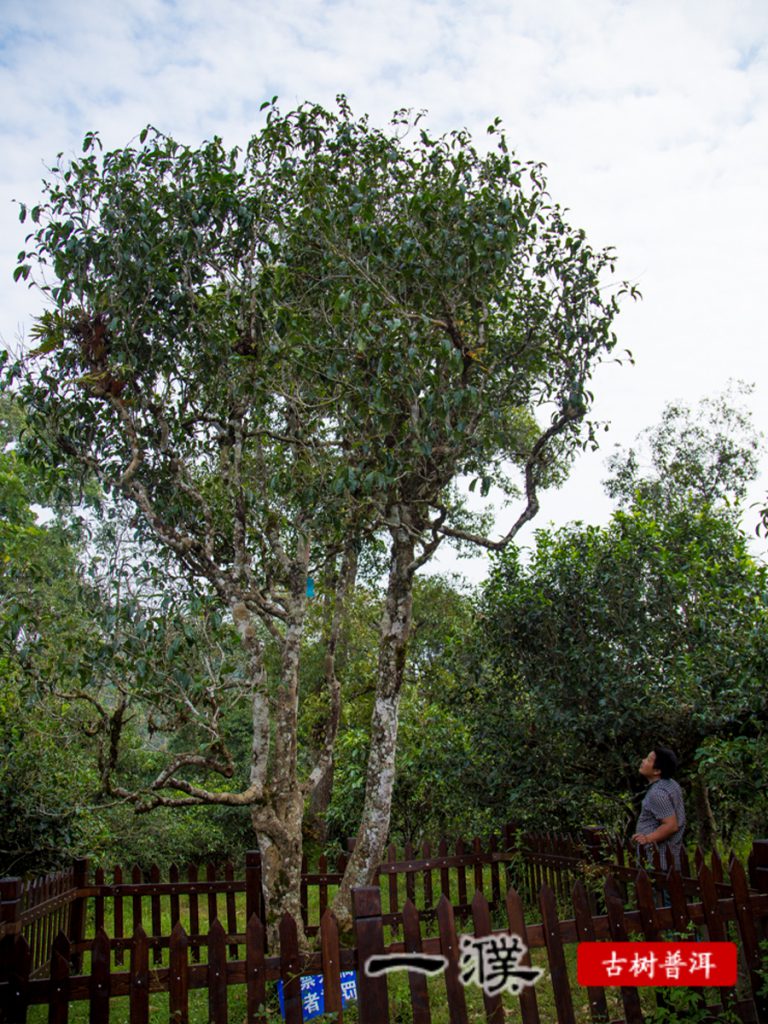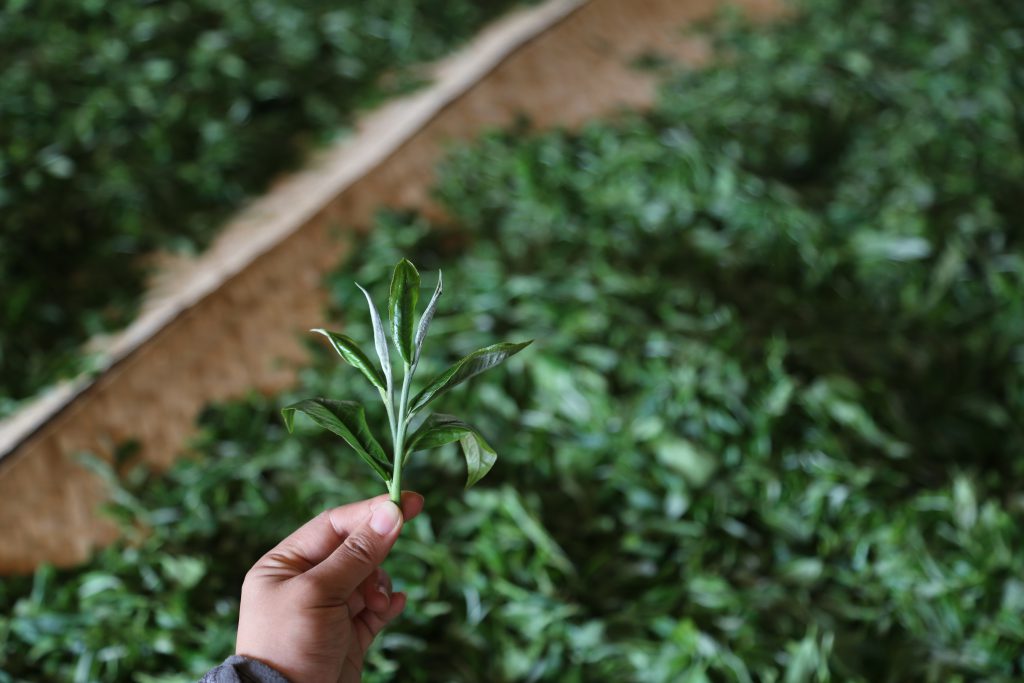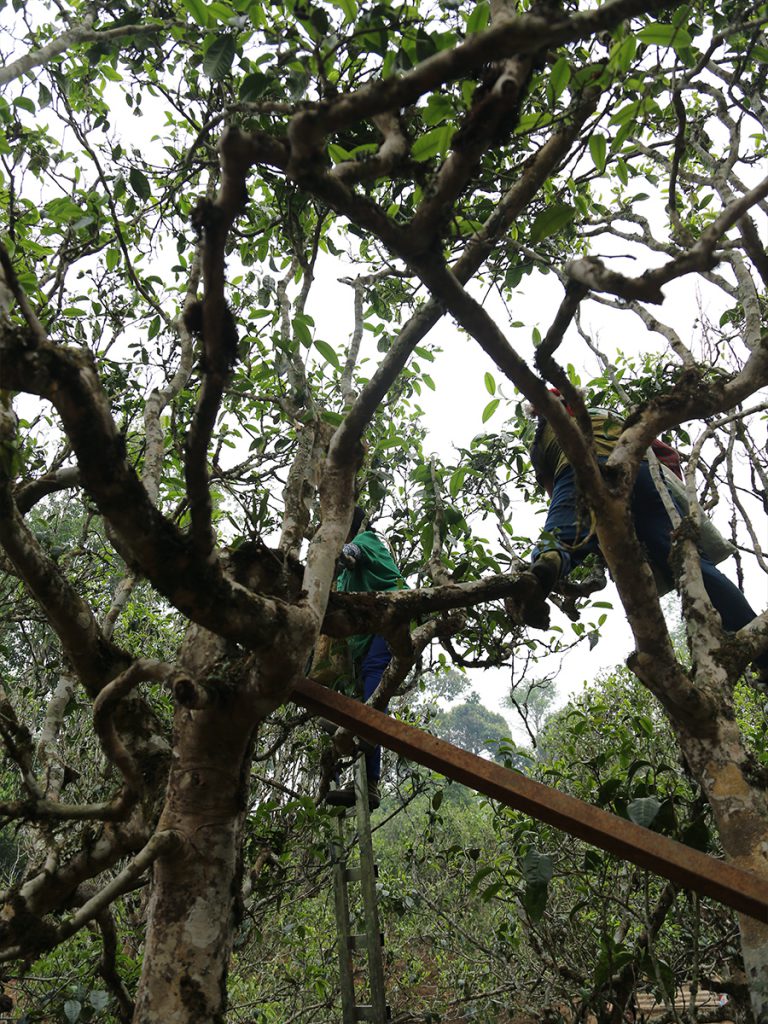
Lao Ban Zhang, nestled deep within the Bulang Mountains of Menghai County, Xishuangbanna, Yunnan, is synonymous with premium Pu-erh tea. Revered as the “King of Pu-erh” or the “Tea Sovereign,” its ancient tree tea is celebrated for its bold intensity, bittersweet interplay, and multi-layered complexity, representing the pinnacle of Pu-erh tea’s flavor artistry.

I. A “Monarch’s Foundation”: Fierce Power Meets Mellow Depth
The first sip of Lao Ban Zhang tea reveals a “thunderous bitterness swiftly soothed by spring-like sweetness”:
- Piercing Bitterness: The initial touch on the tongue delivers a pure, assertive bitterness reminiscent of wild honey’s sharp edge, infused with an earthy vigor that cuts through without lingering astringency.
- Surge of Sweetness: As the bitterness dissolves, an explosive sweetness floods the tongue and cheeks, cascading like melted rock sugar. This enduring sweetness creates a dramatic “bitter-to-sweet” transition.
- Overwhelming Tea Energy: The potent “tea qi” warms the body, inducing heated palms, a flushed back, and a lingering warmth in the throat and chest—a sensation tea connoisseurs dub the “Banzhang Drunk.”

II. A Symphony of Layered Flavors
- Opening Act: Wild Intensity
- In early infusions (1–3 steeps), smoky honey and orchid aromas dominate, intertwined with wild mushroom and dried fruit notes. The liquor strikes the palate like a blade—sharp, clean, and unapologetically bold.
- Mid-Notes: Balance of Power and Grace
- At its peak (4–8 steeps), bitterness and sweetness harmonize. The broth thickens to a velvety texture, blending floral sweetness with aged woody undertones. A cooling mint-like sensation emerges, accompanied by relentless salivation, crafting a multidimensional “bitter-sweet-cool-moist” experience.
- Finale: Lingering Elegance
- Beyond the 10th steep, the tea softens. Bitterness recedes, leaving a spring-water clarity with sugarcane sweetness and pine-smoke whispers. The throaty aftertaste sinks deep into the chest, while the sweetness lingers for hours.

III. The Secrets Behind Its Sensory Mastery
- Wilderness-Infused Vigor
- Lao Ban Zhang’s ancient trees (200–800 years old) thrive in mineral-rich soil under stark diurnal temperature shifts. This environment yields exceptionally high levels of tea polyphenols, caffeine, and amino acids. A high polyphenol-to-amino-acid ratio forms the “bitter-strong, sweet-strong” backbone, while abundant pectin creates an oily, full-bodied texture.
- Craftsmanship Honed to Perfection
- Traditional hand-fixation and sun-drying preserve the tea’s vitality. Young tea is fiercely potent, but after 3–5 years of aging, bitterness mellows into honeyed and camphorwood aromas, transforming the broth into a smooth, creamy elixir that embodies “power tempered by grace.”

IV. Distinctive Traits Among Neighboring Tea Mountains
- VS Lao Man’e: Lao Man’e is known for its unrelenting bitterness with slower but enduring sweetness. Lao Ban Zhang’s bitterness is purer and faster to transform, with a more explosive sweetness.
- VS Bing Dao: Bing Dao emphasizes crystalline sweetness and softness, while Lao Ban Zhang triumphs with raw power and sensory intensity—aptly summarized as “Bing Dao the Queen, Banzhang the King.”
- VS Xin Ban Zhang: Though from the same lineage, Xin Ban Zhang’s soil imparts slight astringency and less aromatic depth, with a shallower throat resonance.
V. Brewing Guidelines for Optimal Enjoyment
- Water Temperature: 100°C boiling water to unleash its character; use a Yixing teapot or gaiwan.
- Dosage: 8g/150ml; steep briefly for the first 5 infusions to avoid excessive bitterness.
- Aging Potential: Young tea showcases primal vigor; after 5+ years, the broth gains richness and complexity, blending bitterness and sweetness like “silk-wrapped iron.”

Epilogue
Lao Ban Zhang Ancient Tree Tea embodies the untamed spirit of primordial forests and the wisdom of time. Its “bitterness-to-bliss” journey epitomizes Pu-erh’s essence—“more aged, more sublime.” With its unyielding yet refined flavor, it reigns supreme in the hearts of tea lovers. Each sip is an epic of mountains and seasons, unfolding on the palate.